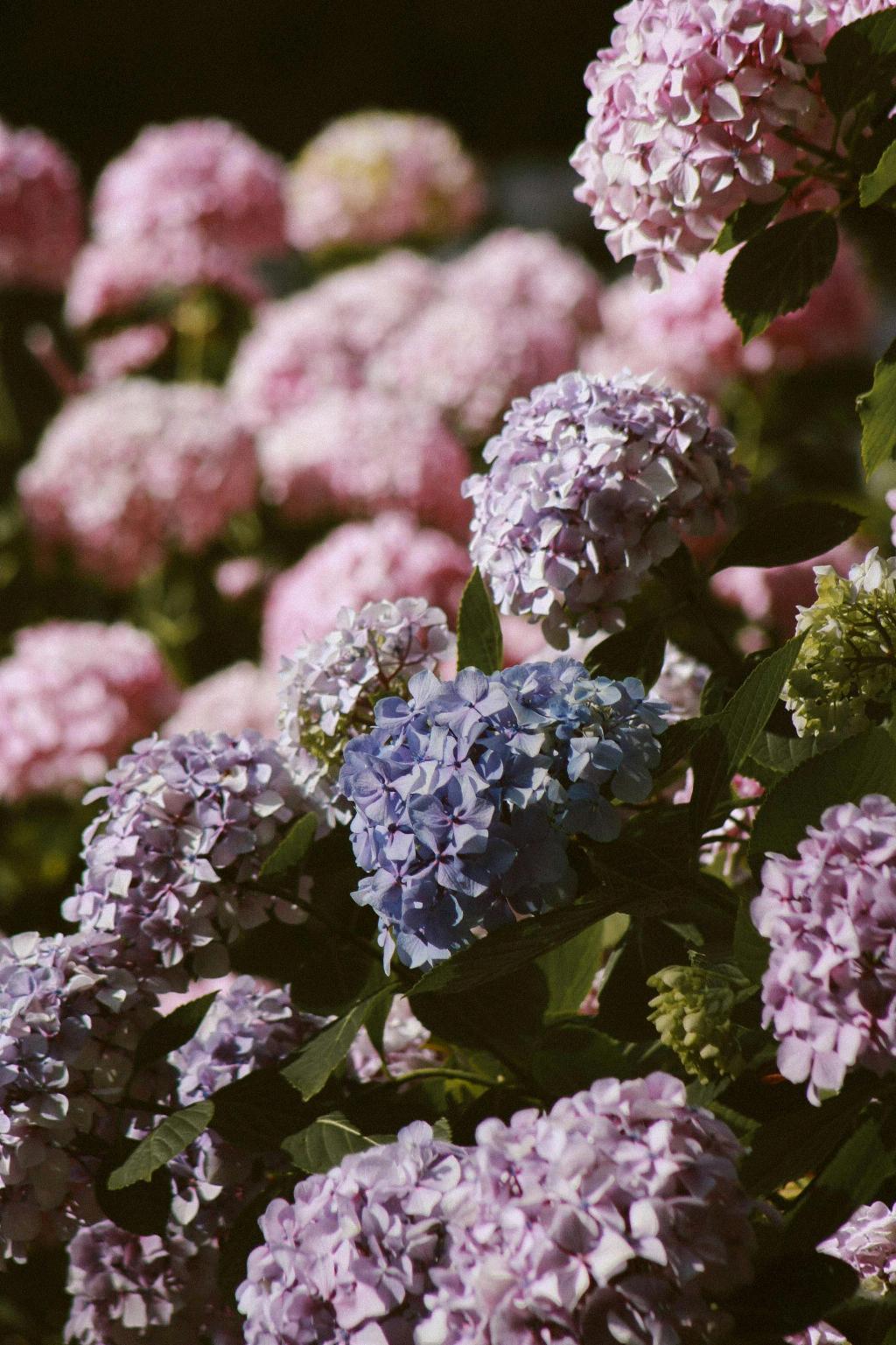When it comes to caring for potted hydrangeas, proper watering is crucial for their health and vitality. These plants can wilt if they do not receive enough water, and constant wilting can weaken them, leaving them vulnerable to pests and diseases. Therefore, it is important to regularly check your hydrangea for moisture levels. In hot and dry weather, daily checks may be necessary to ensure the soil does not dry out completely.
Checking Soil Moisture
One of the best ways to assess when to water your potted hydrangea is by checking the soil moisture. Simply insert your finger into the soil up to an inch deep. If the top inch feels dry to the touch, it’s time to water your plant. Hydrangeas thrive in well-draining soil that retains moisture without becoming waterlogged, so finding the right balance is key to their care.
Thorough Watering
When it’s time to water your potted hydrangea, ensure you do so thoroughly. Water the plant until you see water coming out of the drainage holes at the bottom of the pot. This helps ensure that the roots receive adequate moisture and prevents the accumulation of excess salts in the soil. Proper watering is essential for hydrangeas to maintain healthy growth and vibrant blooms.
Light and Temperature
Potted hydrangeas thrive in bright, indirect light. They prefer morning sun and some shade in the afternoon to protect them from intense heat. Additionally, maintaining a consistent temperature around the plant is important for its overall well-being. Avoid placing your hydrangea near drafty windows or air conditioning vents, as sudden temperature changes can stress the plant.
Fertilizing Hydrangeas
Regular fertilization is key to promoting healthy growth and abundant blooms in potted hydrangeas. Opt for a balanced, slow-release fertilizer specifically formulated for flowering plants. Apply the fertilizer according to the package instructions, typically in the spring and summer months when the plant is actively growing. Be cautious not to over-fertilize, as this can lead to excessive leaf growth at the expense of flower production.
Pruning and Deadheading
Pruning and deadheading are essential tasks in maintaining the shape and health of your potted hydrangea. Deadheading, or removing spent blooms, encourages the plant to redirect its energy into new growth and flower production. Pruning, on the other hand, helps shape the plant and remove any damaged or overgrown branches. Perform these tasks as needed throughout the growing season to keep your hydrangea looking its best.
Pest and Disease Management
Keeping an eye out for pests and diseases is crucial in caring for potted hydrangeas. Common pests that may affect hydrangeas include aphids, spider mites, and scale insects. Regularly inspect the leaves and stems for any signs of infestation, such as distorted foliage or sticky residue. If pests are detected, treat the plant with an appropriate insecticidal soap or horticultural oil following the manufacturer’s instructions.
Choosing the Right Pot
The choice of pot plays a significant role in the health and development of your potted hydrangea. Opt for a container with ample drainage holes to prevent waterlogged soil, which can lead to root rot. Additionally, choose a pot that is slightly larger than the plant’s current root ball to allow for growth. Consider using a high-quality potting mix that provides adequate aeration and moisture retention for optimal plant health.
Winter Care
As temperatures drop, it’s important to take the necessary steps to protect your potted hydrangea during the winter months. If you live in a region with harsh winters, consider bringing your plant indoors to a cool, well-lit area. Alternatively, you can insulate the pot with mulch or bring it closer to the house for added protection. Avoid exposing your hydrangea to freezing temperatures, as this can damage the roots and result in stunted growth in the following season.
Hydrangea Varieties
There are several varieties of hydrangeas that thrive in potted environments, each showcasing unique colors and bloom shapes. Some popular choices include the mophead hydrangea, lacecap hydrangea, and panicle hydrangea. Research the specific care requirements for the variety you choose to ensure you are providing the optimal conditions for your potted hydrangea to flourish.
Rejuvenating Overgrown Plants
If your potted hydrangea has become overgrown or leggy, it may benefit from rejuvenation pruning. This involves cutting back a portion of the plant to encourage new growth and improve its overall appearance. Rejuvenation pruning is best done in the early spring before new growth begins. Take care not to remove more than one-third of the plant at a time to avoid shocking it.
Enjoying Your Blooms
With proper care and attention, your potted hydrangea can reward you with stunning blooms throughout the growing season. Whether displayed on a patio, balcony, or indoor setting, these versatile plants add a touch of elegance to any space. Take the time to nurture your hydrangea, and you will be rewarded with vibrant colors and lush foliage that brighten up your surroundings.

